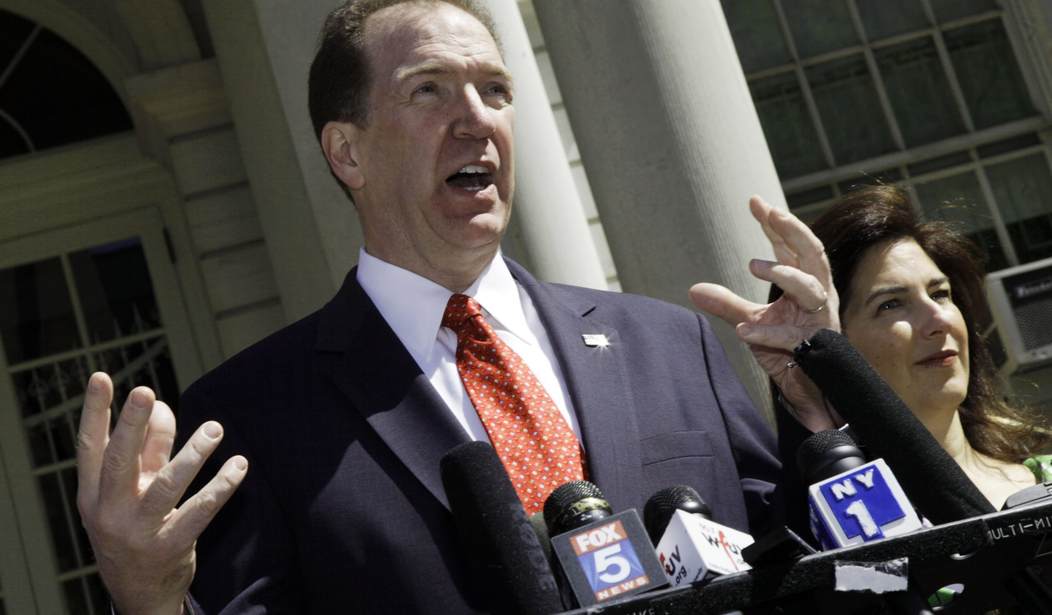David Malpass, senior economic adviser to Republican nominee Donald Trump’s presidential campaign, said Trump should have “responded directly” against rival Hillary Clinton’s argument in the final debate that his tax plan would benefit the wealthy.
In the final presidential debate, Clinton said, “Donald’s plan has been analyzed to conclude it might lose 3.5 million jobs. Why? Because his whole plan is to cut taxes, to give the biggest tax breaks ever to the wealthy and to corporations, adding $20 trillion to our debt, and causing the kind of dislocation that we have seen before, because it truly will be trickle-down economics on steroids.”
PJM asked Malpass, a former New York Senate candidate, if Trump’s tax plan disproportionately benefits the wealthy and why Trump did not chose to keep the existing upper-income tax rates the same.
“She [Hillary Clinton] was wrong on that and he should have responded directly to that. There were lots of things going on in the debate at that time so the fact is that his plan has its biggest benefit for middle-class taxpayers and that’s done in two ways. One is the direct cut in tax rates through the brackets and the lowering of the rates, but then very important to the middle class is a higher participation rate, which means that people’s wages will go up. We’ve had this period for years now, nearly 15 years of declines in real median income with a very high top marginal tax rate and so that system is not working,” Malpass told PJM after a National Economists Club luncheon last week.
According to the Tax Foundation’s analysis, the Trump plan would give a large tax break to middle- and upper-income taxpayers. Under Trump’s plan, someone making under $25,000 and a family making less than $50,000 per year would not pay any income tax.
“Reagan addressed this all in great detail. There were lots of economic studies done that if you have a lower top marginal rate, the biggest share of the benefit goes into the middle class, which is what would happen here, so there should have been pushback on that. I think she was incorrect in that and, of course, that’s always a position of Democrats, that we should raise taxes on the rich because they won’t feel it and there won’t be an impact on anybody else in society. We know that’s not true,” Malpass said.
According to an analysis by economists and computer engineers at the University of Pennsylvania’s Wharton School of Business, Trump’s tax plan would be better for the economy in the short term while Clinton’s would be better in the long run. The analysis estimated that Trump’s tax plan would create 1.7 million jobs, but there could be 682,000 fewer jobs by 2027 than in the current economy. As for Clinton’s tax plan, the analysts found that it would result in the loss of 282,000 jobs in 2018, but would add about 645,000 jobs in the long term assuming certain factors.
Malpass was asked if he agreed with the recent Wharton report on Trump’s tax plan.
“I’m not a fan of macro models. Economics tries to say it knows what the future will be so we’ve seen it over again in IMF forecasts and in the Federal Reserve’s forecast, and in these macro models where the future is very different from what is projected out. In the macro models that have been done on Trump’s tax plan, you look at them and they have a pattern problem. They don’t think there will be much more growth so you end up with a tax cut that doesn’t cause growth,” he said.
“Well, why would you do such a thing? As the rates go down, you’re going to get more business investment. Is that comprehended within the model? One of the biggest areas, I think, of mistake in those macro models is they don’t think of business investment as being nearly as variable — as responsive to tax rates as it actually is. But we all know businesses are super-sensitive to after-tax return on new investment.”









Join the conversation as a VIP Member